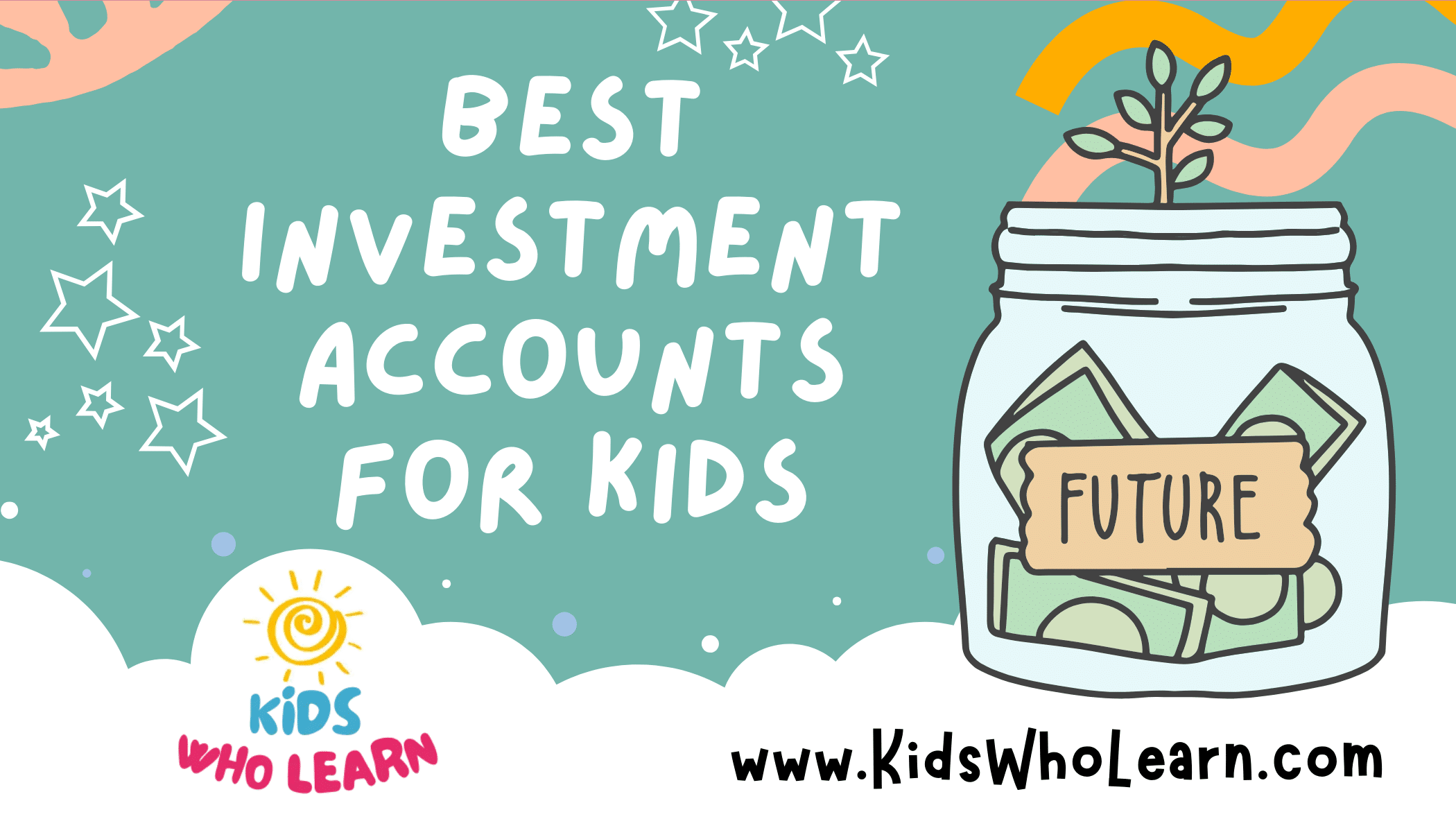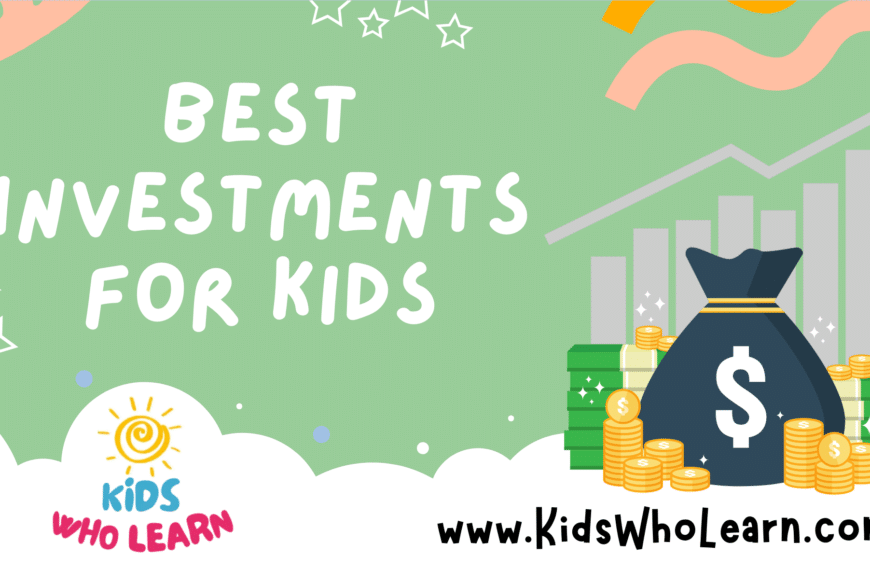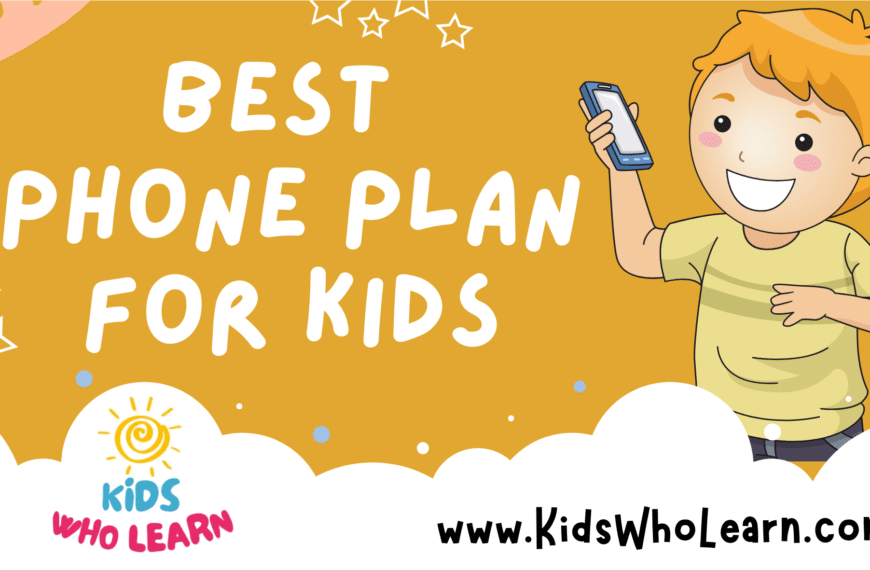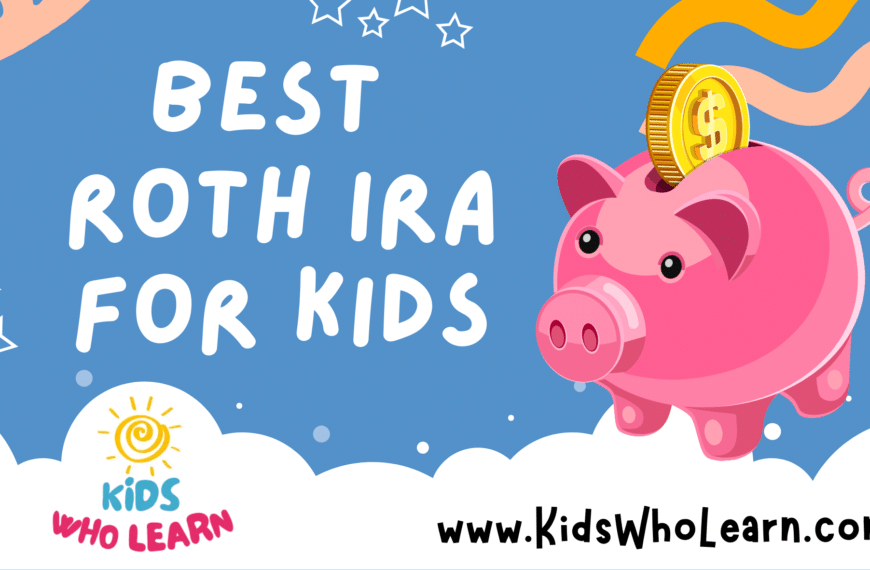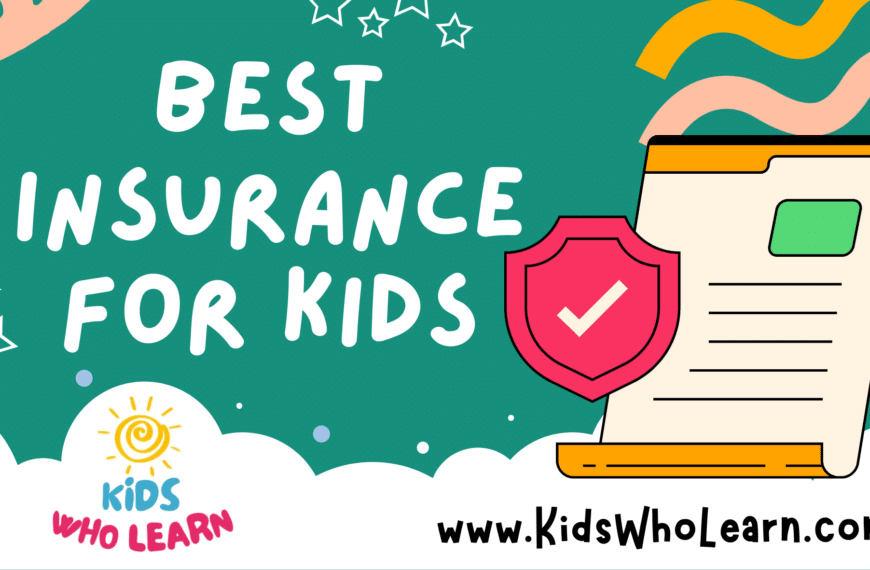Investing for your children’s future is a step towards securing their financial well-being. Choosing the right investment account is essential for growing their savings and teaching them about financial responsibility. There are various accounts designed specifically for minors, each with its unique features and benefits aimed at meeting long-term goals such as educational expenses or an early start on retirement savings.
Understanding the different types of accounts available is crucial. Custodial accounts, such as UGMA and UTMA, allow parents and guardians to invest on behalf of their children with the assets transferring to the child at the age of majority. Alternatively, specialized saving accounts like 529 plans or Coverdell Education Savings Accounts focus on educational expenditures. Deciding which account suits your child’s future needs involves assessing tax implications, investment options, and the flexibility of fund usage.
Selecting the right investment account for your child involves careful consideration of how these funds will be used and the role you’ll play in managing the investments. Whether your goal is to maximize savings for education or to instill financial literacy from a young age, starting early can compound the benefits. It’s also important to understand how these accounts may affect financial aid eligibility and the necessary steps for transitioning account ownership once your child reaches adulthood.
Key Takeaways
- Selecting the right investment account is vital for growing children’s savings and teaching financial responsibility.
- There are different accounts with various benefits, including custodial accounts and education savings accounts.
- Consider how the investment will be used and how it might affect future financial aid when choosing an account.
Understanding Investment Accounts for Kids
Investment accounts for kids offer a strategic way to save for a child’s future. The two primary types are custodial accounts under UGMA/UTMA and Custodial Roth IRAs, each with unique features and tax implications.
Custodial Accounts: UGMA and UTMA
Uniform Gifts to Minors Act (UGMA) and Uniform Transfers to Minors Act (UTMA) accounts are types of custodial accounts set up by an adult on behalf of a minor. These accounts allow you to invest in stocks, bonds, mutual funds, and more while the assets are in the child’s name. The key differences between the two are the types of assets they can hold and their availability by state.
- UGMA accounts can include:
- Cash
- Securities
- Insurance policies
- UTMA accounts can hold the same as UGMA, plus:
- Real estate
- Intellectual property
When the minor reaches the age of majority, they gain control of the account. The age of majority varies by state but is typically 18 or 21.
Custodial Roth IRA
A Custodial Roth IRA is an individual retirement account that minors can own, with an adult acting as the custodian. To contribute to a Custodial Roth IRA, the child must have earned income from a job.
Key Points:
- Contributions are made with after-tax dollars
- No tax on withdrawals if the account has been open for at least five years and the minor is over 59 1/2 years old
- Contributes to a child’s financial independence and early education in investing
Both UGMA/UTMA and Custodial Roth IRAs offer children the chance to grow their savings and learn the fundamentals of investing. They also come with responsibilities for managing potential tax liabilities effectively.
Exploring Account Types and Their Benefits
Investing in your child’s future requires an understanding of the various account types available and their unique benefits. Each offers different advantages like tax breaks and flexibility, tailored to support educational and financial growth.
Education Savings Accounts (ESA)
Education Savings Accounts (ESA), also known as Coverdell Education Savings Accounts, allow you to contribute up to $2,000 per year for each beneficiary. Your contributions grow tax-free, and withdrawals for qualified education expenses are also not taxed. ESAs offer investment flexibility, but they are only available to families meeting certain income requirements.
529 College Savings Plans
The 529 College Savings Plans are popular due to their high contribution limits and potential state tax deductions. Earnings in a 529 plan grow tax-deferred, and withdrawals for qualified education expenses are tax-free. These plans can cover a range of costs beyond tuition, such as room and board. You’ll find two types: savings plans, which function like investment accounts, and prepaid tuition plans that allow you to pay for future tuition at today’s rates.
Brokerage Accounts
Brokerage accounts are versatile investment accounts that can be opened for a minor. They don’t have the same tax benefits as ESAs or 529 plans because contributions are made with after-tax dollars. However, they offer maximum flexibility; there are no contribution limits or restrictions on how the funds can be used. This makes brokerage accounts a good complement to education savings accounts, potentially covering expenses that are not considered qualified education expenses.
Investment Options for Youth Accounts
When opening investment accounts for kids, the key is to select options that balance potential growth with an appropriate level of risk. Various investment products cater to these objectives, allowing you to build a diverse portfolio for your child’s future.
Stocks and Bonds
Investing in individual stocks and bonds provides an opportunity for growth and income, respectively. Stocks represent ownership in a company and can generate returns through price appreciation and dividends. Bonds are loans to corporations or governments, paying back with interest over time.
- Stocks: potential for high returns; higher risk
- Bonds: steady income; generally lower risk than stocks
Mutual Funds and ETFs
Mutual funds and exchange-traded funds (ETFs) are popular for youth investment accounts due to their diversification benefits. Both pool money from many investors to buy a variety of securities, reducing the risk that comes with investing in individual stocks or bonds.
- Mutual Funds: managed by professionals; good for long-term growth
- ETFs: traded like stocks; lower fees and tax-efficient
Certificates of Deposit (CDs)
Certificates of Deposit (CDs) are a conservative investment option, offering a fixed interest rate over a specific period. Though they typically offer lower returns compared to stocks or funds, CDs are a safe choice to preserve capital and earn steady interest.
- CDs: fixed interest rate; low risk
- CDs are insured by the FDIC up to certain limits, adding security to your investment.
Factors to Consider When Choosing an Account
When selecting an investment account for your child, it’s important to consider various practical constraints and financial benefits. Each account type comes with its nuances in contributions, taxes, and fees, which can significantly affect your investment’s potential growth.
Contribution Limits and Eligibility
Most investment accounts for children have contribution limits and eligibility requirements. For instance, Custodial IRAs (Individual Retirement Accounts) allow you to contribute up to a specific amount each year, but your child must have earned income. On the other hand, a 529 Plan allows higher contribution limits, which can be as much as several hundred thousand dollars depending on your state, but contributions must be made with after-tax dollars. These aspects affect how much money can be put aside for your child’s future.
| Account Type | Contribution Limit | Eligibility Criteria |
|---|---|---|
| Custodial IRA | $6,000 (2023 limit) | Child must have earned income |
| 529 Plan | Varies by state | No specific eligibility criteria |
Tax Implications
The tax implications of an investment account for kids can greatly influence the net benefit of the account. Investments in accounts such as Coverdell ESAs and 529 Plans grow tax-free and withdrawals for qualifying educational expenses are not taxed. Custodial Roth IRAs offer tax-free growth and tax-free withdrawals after age 59½ on earnings, as long as the account has been open for 5 years. It’s essential to understand how capital gains taxes will apply to your investment growth and how it may contribute to your child’s future taxable income.
| Account Type | Tax on Contributions | Tax on Withdrawals |
|---|---|---|
| Coverdell ESA | After-tax dollars | Tax-free for educational expenses |
| 529 Plan | After-tax dollars | Tax-free for educational expenses |
| Custodial Roth IRA | After-tax dollars | Tax-free after age 59½ and 5-year holding |
Account Management and Fees
Evaluate the account management options and associated fees, which can diminish your account balance over time. Some accounts may charge maintenance fees, while others could have high expense ratios for the funds in which you invest. It’s essential to understand these costs, as they can erode your investment growth over time. Look for accounts with low fees and transparent management policies to ensure you maximize the potential for your child’s investment growth.
| Account Type | Typical Fees | Management Features |
|---|---|---|
| Custodial IRA | Transaction fees, maintenance fees | Active or passive management |
| 529 Plan | Plan management fees, fund expense ratios | Typically passive, state-dependent |
| Coverdell ESA | Vary by provider | Choice of almost any investment |
By weighing these factors thoughtfully, you can select an investment account that best suits your child’s future financial needs.
The Impact of Investing Early
By starting to invest for your kids at a young age, you’re setting the stage for a future of financial security and informed money management.
The Power of Compound Interest
Compound interest is the engine that drives the growth of an investment over time. It’s the process where the interest earned on an investment is reinvested, generating additional earnings. For kids, this means that money put into investment accounts can grow exponentially. To illustrate:
| Age of Initial Investment | Interest Rate | Future Value at 65 |
|---|---|---|
| 0 | 5% | $1,467.05 |
| 5 | 5% | $1,114.08 |
| 10 | 5% | $844.90 |
| 15 | 5% | $640.72 |
This table assumes a one-time investment of $100.
Starting to invest for your child as early as possible can take full advantage of compound interest, allowing more cycles of reinvestment and growth. This can have a dramatic effect on retirement savings and other financial goals, even if the initial investment or regular contributions are small.
Educational and Future Financial Goals
Investing early also supports the future educational and financial goals of your child. Setting up specific investment accounts for kids can prepare them for significant expenses such as college, homeownership, or even starting a business.
- 529 College Savings Plans: These tax-advantaged investment accounts can be a smart choice for saving for college, potentially reducing the need for financial aid in the future.
- Custodial IRAs: Even children with earned income can contribute to a Retirement Account like a Roth IRA, treating small earnings today as a stepping stone toward long-term retirement savings.
By integrating investing into your child’s life, you’re also providing them with a crucial financial education. They’ll learn the importance of saving, the impact of investment choices, and the satisfaction of watching their money grow over time. These lessons, imbued from a young age, are invaluable in building responsible financial habits.
Evaluating the Role of Guardians in Kids’ Investments
As a guardian, your role in managing and safeguarding your child’s investment is pivotal, ensuring legal compliance and promoting sound financial growth.
Parental and Guardian Responsibilities
Your primary responsibility as a parent or guardian is to oversee and guide your child’s financial journey. You must:
- Choose the right investment account: select one that suits your child’s future needs and your financial goals.
- Monitor account activity: keep an eye on the investment’s performance and make adjustments according to market changes.
You’re also tasked with teaching money management skills, which includes showing them how to track their financial assets and understand market basics.
Legal and Financial Considerations
Legal compliance is paramount. As a guardian, you must:
- Understand the tax implications for the child’s investment account.
- Be aware of contribution limits and rules specific to minors.
From a financial standpoint, your decisions should aim to:
- Optimize returns while managing risks.
- Plan long-term, considering how these assets will transition as your child reaches adulthood.
How Investment Accounts for Kids Influence Financial Aid
When you set up an investment account for your child, it’s important to understand how it may affect their financial aid options. Assets in these accounts can impact the aid they receive for college education.
Impact on Financial Aid Eligibility
Investment accounts in your child’s name are assessed at a higher rate than parental assets on the Free Application for Federal Student Aid (FAFSA). Expected Family Contribution (EFC), which is used to determine financial aid eligibility, considers child-owned investment accounts more heavily.
- FAFSA Assessment: 20% of child assets can be used to calculate the EFC, compared to up to 5.64% of parental assets.
| Account Owner | Assessment Rate |
|---|---|
| Child | 20% |
| Parent | Up to 5.64% |
This means that the more assets held in your child’s investment account, the higher the EFC could be, potentially reducing the amount of financial aid for which they are eligible. This includes grants, student loans, and work-study funds.
- Education Expenses: Financial aid is designed to cover education expenses. A higher EFC means your child is considered to have more resources to pay for college costs.
Both student and parent income are considered by financial aid programs, but student income is weighted more heavily. Therefore, any income or capital gains from a child’s investment account might reduce their aid eligibility further.
| Income Source | Consideration in Aid Calculation |
|---|---|
| Student Income | More heavily weighted |
| Parent Income | Less heavily weighted |
By understanding these factors, you can better plan how to use investment accounts to benefit your child’s education without adversely affecting their financial aid prospects.
Preparing for Withdrawals and Account Transition
When planning for your child’s future, it’s essential to understand the rules and implications of withdrawing funds and transitioning the account once they reach adulthood.
Withdrawing for Educational Expenses
When you withdraw funds for your child’s education, many investment accounts for kids offer tax-free withdrawals if the money is used for qualified educational expenses. This commonly includes tuition, books, and in some cases, room and board.
- Penalty-Free Withdrawals: Broader investment accounts may impose penalties for early withdrawals, but specialized education accounts like 529 Plans allow you to withdraw funds for educational purposes without penalties.
- Age Restrictions: Verify age stipulations for withdrawals, as some accounts like Coverdell ESA impose limits on when funds must be used.
Transitioning Accounts as Kids Reach Adulthood
Transitioning an investment account to your child as they reach adulthood involves understanding the terms of the account and the steps needed to ensure a smooth handover.
- Age of Majority: Accounts like UGMA/UTMA automatically transfer to the child once they reach the age of majority, which varies by state.
- Control Transfer: For 529 Plans and similar accounts, you maintain control of the account, but can change the beneficiary or owner as needed. Always check the specific plan details.
- Account Conversions: Some investment accounts may require a formal conversion process, such as turning a custodial account into an individual account in your child’s name.
Frequently Asked Questions
Before jumping into a custodial account for your child, it’s essential to understand the features to look for, investment strategies, and the types of funds that are most suitable.
What are the features to look for when choosing a custodial investment account for minors?
You’ll want to consider the fees, investment options, and the educational resources the account provides. It’s also important to review the account’s flexibility in terms of fund accessibility and restrictions.
How can I effectively invest $5,000 for my child’s future?
Investing $5,000 for your child’s future should focus on growth potential and time horizon. Consider well-diversified mutual funds or a 529 college savings plan to potentially maximize the growth over time.
What types of funds are most suitable for a child’s long-term investment?
Long-term investments for a child often benefit from stocks or growth-oriented mutual funds due to their potential for higher returns over time. Index funds can also be suitable for their lower costs and broad market exposure.
What are some of the best strategies for investing in stocks for a custodial account?
A balanced strategy focusing on diversification and long-term growth can be beneficial. Look for stocks with a history of stable growth or index funds to spread the risk. Revisit and adjust the holdings as the child grows older.
How do I open a custodial brokerage account and what factors should I consider?
To open a custodial brokerage account, choose a reputable broker, gather necessary documentation for both you and your child, and decide on the type of account. Consider the broker’s fees, services offered, and the educational tools they provide for young investors.
What are the financial benefits of starting an investment fund for my child at an early stage?
Starting early allows more time for compound interest to work in favor of your child’s investment. It can introduce financial literacy early on and potentially lead to a sizable portfolio by the time they reach adulthood.

